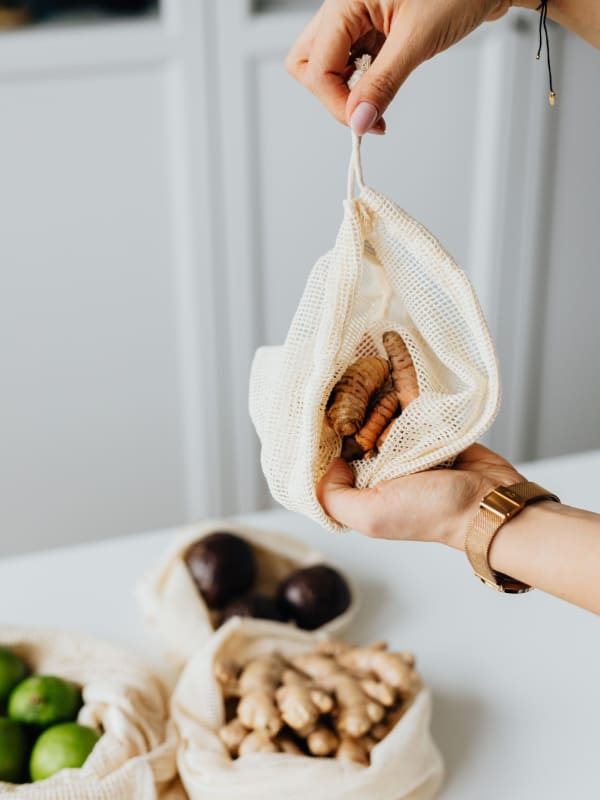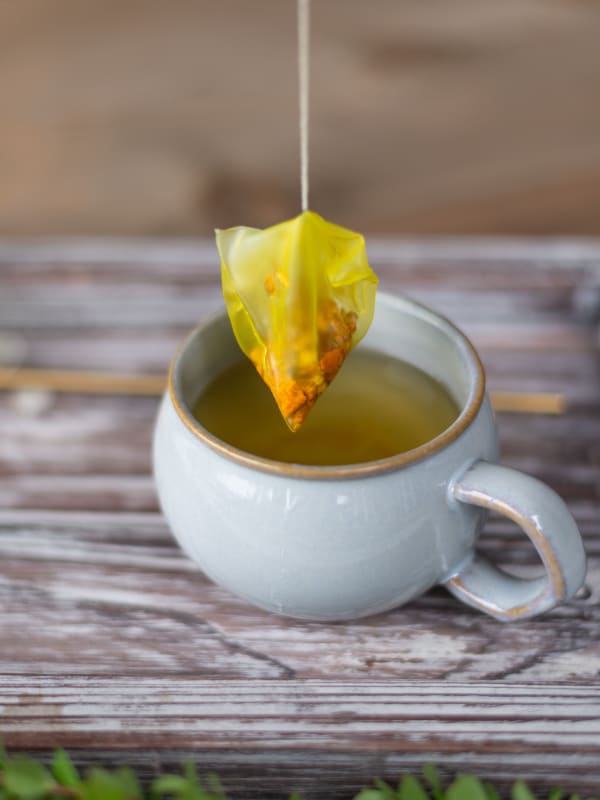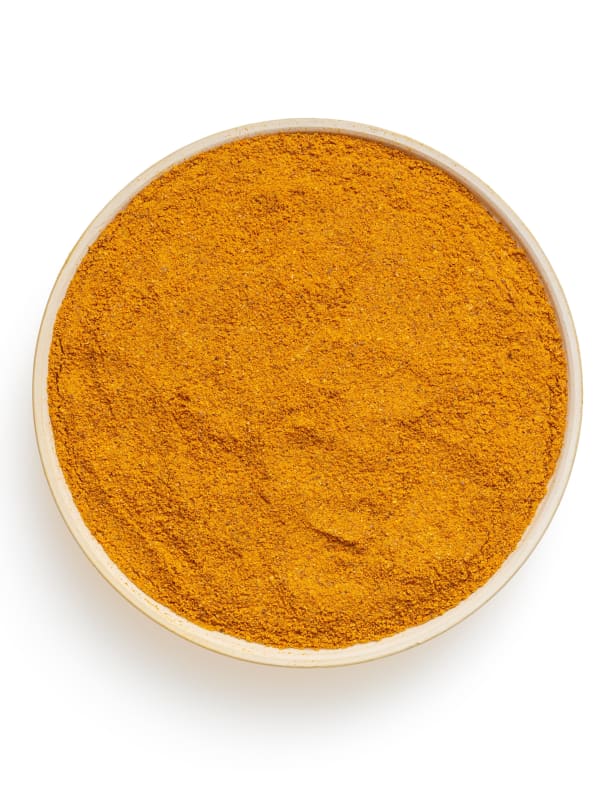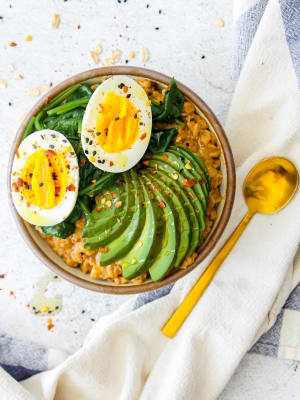Turmeric: Unraveling the Golden Spice's Health Secrets

Turmeric: Unraveling the Golden Spice's Health Secrets
Discover the ancient wisdom and modern science behind turmeric's anti-inflammatory power, liver protection, mental health benefits, and the fascinating potential of its lesser-known compounds
Everyone’s favourite golden spice and the reason why curry powder is curry yellow, turmeric is witnessing a renaissance in the West for its properties as an anti-inflammatory powerhouse. But there is certainly nothing new about turmeric. It has been a staple across South Asia since time immemorial. Growers have cultivated it in southern India and Indonesia for medicine, dye, and ceremonial uses for at least four millennia.
Most of us are mainly acquainted with turmeric powder, made from the dried root of the Curcuma Longa plant, a member of the Zingiberaceae (ginger) family. At better grocery stores, we can even find the root juicy and fresh in the refrigerated section.
In the context of traditional Ayurvedic medicine, turmeric has been used for a long list of health conditions, including acne and other skin issues, digestive upset, impaired circulation, mood disorders, menstrual irregularities, various painful inflammatory disorders, breathing problems, and liver and gallbladder ailments. It is even used to soothe a colicky baby! Modern science has only confirmed and expanded the myriad benefits of this beautiful botanical gem, which is used today much more often than in ancient times.

Curcumin and Curcuminoids
Curcuminoids are the unique pigments that give turmeric its signature golden hue. Of the family, three are primary: curcumin, demethoxycurcumin, and bisdemethoxycurcumin. The most abundant of these is also the easiest to say: curcumin. Turmeric has the tremendous honor of being the number one most studied substance in the whole world of natural botanicals, and curcumin is single-handedly the major reason why. This truly stunning and multifaceted compound has extremely well-documented and potent anti-inflammatory, antioxidant, and anti-cancer effects.
The anti-inflammatory properties of curcumin alone have been shown in hundreds of studies to rival and, over-the-counter pharmaceuticals for pain relief. So it shouldn’t be surprising that many joint pain sufferers use curcumin regularly to reduce morning stiffness and swelling. Even for a bad headache or menstrual cramps, turmeric or curcumin supplements can sometimes totally replace medicine cabinet staples like ibuprofen or naproxen.
Curcumin and the Liver
It’s pretty much impossible to overstate the importance of our liver. After passing through the gut barrier, all nutrients, drugs, and toxins must pass through it. The highly specialized Kupffer cells in the liver work like a post office to sort, package, and distribute nutrients for delivery to tissues throughout the rest of the body while preparing unnecessary or harmful material for healthy escort out of the body.
If that weren’t enough, the liver also:
- Works to balance blood sugar in conjunction with the pancreas, breaking down glycogen when blood sugar is low and absorbing glucose when high.
- Produces bile for the gallbladder, a critical element for absorbing fat-based nutrients in the gut and binding to toxic material and excess hormones.
- Assists with healthy red blood cell breakdown.
- Assembles complete proteins from the amino acids in our diet.
- Produces cholesterol, the primary building block for all steroid hormones. It also metabolizes hormones like progesterone, estrogen, and testosterone, playing a critical role in the body’s overall hormone balance.
The mind-boggling complexity of the liver’s various responsibilities and its unique position on the very front lines of defending our body makes it prone to damage by oxidative stress, and this is where curcumin comes in.
Curcumin neutralizes free radicals ten times more powerfully than vitamin E. This extraordinary antioxidant ability allows it to prevent damage to the liver from a wide variety of stressors, including alcohol, acetaminophen, heavy metals, medication, infections, and more. Universally accepted barometers of liver health as seen on a blood panel such as aspartate transaminase (AST), alkaline phosphatase (ALP), and alanine transaminase (ALT) have all been shown to respond favorably to curcumin intake in both generally healthy people and those with diagnosed liver conditions like non-alcoholic fatty liver disease and cirrhosis. By all estimations, turmeric is a hepatoprotectant (liver protector) of the finest caliber.

Curcumin and Mental Health
Perhaps less well-known than curcumin’s association with the liver is its association with the brain. At this point, however, the science robustly demonstrates that curcumin may have a beneficial role in a wide variety of neurological disorders, from Major Depressive Disorder to schizophrenia and Parkinson’s. Not only has it been shown to help rebalance our happiness chemicals serotonin (our ‘calm and blissful’ neurotransmitter) and dopamine (our ‘pleasure and reward’ neurotransmitter), but it can significantly reduce brain inflammation. It can even help reduce the permeability of the blood-brain barrier that functions to keep toxic material in general circulation from interfering with neurological function. Amazingly, curcumin itself can cross the blood-brain barrier, bind to, and clear out beta-amyloid plaques associated with Alzheimer’s disease! Recent science has shown that curcumin can even boost the efficacy of pharmaceutical antidepressants, suggesting that it may have a role to play as an adjunct in therapy for depression.
Turmeric and the Issue of Bioavailability
Supplement retailers will be quick to tell you that turmeric is something of a contradiction. While curcumin’s clinical benefits are impossible to dispute, it is a notoriously hard compound for the body to absorb. Even when absorbed, it is rapidly conjugated in the liver, meaning that it is attached to other compounds like sulfate or glucuronide, effectively rendered unusable.
This principle of optimizing availability by preventing conjugation has led to a race among manufacturers to produce and patent various technologically refined curcumin products designed to remain unconjugated (or “free form”) for abundant circulation and full therapeutic action. The issue of limited bioavailability is why curcumin supplements will often occupy a whole shelf in the vitamin shop and why the one you choose may make all the difference if you’re looking for tangible pain relief.
Turmeric: Not Just Curcumin
The past 20 years have seen a comprehensive mapping of food chemistry. As science has uncovered the most active compounds of our favorite ancestral foods, we have witnessed a corresponding gold rush in supplement technologies attempting to take things to the next level. Sulforaphane from broccoli, for example, has been isolated and stabilized with proprietary technology, given a fancy label, and sold for 90 dollars a bottle. The implicit assumption behind this approach to making clinical versions of functional food compounds is that we can take what’s good about broccoli and make it better.
There is no better example of this trend than turmeric. Supplement marketing often goes so far as to suggest that, due to the low bioavailability of curcumin, you might as well give up on eating turmeric entirely because you will never achieve any therapeutic action whatsoever from the spice as it appears in recipes. But is this true?
Firstly, the assumption that turmeric is clinically useless unless it’s in an expensive pill would question the enormous legacy of its use in Ayurvedic and Traditional Chinese Medicine. Were these generations of experts just imagining the many healing benefits of the golden spice in its natural, unrefined state?
Secondly, we must recognize that turmeric is more than just one active compound. Curcumin itself is an example of a diarylheptanoid, a distinctive type of phytochemical. But aside from the three curcuminoids mentioned, sophisticated mass spectrometry has identified more than 16 other fascinating diarylheptanoids. Even the lesser-known curcuminoids, demethoxycurcumin, and bisdemethoxycurcumin have a growing wealth of research reporting their benefits:
Bisdemethoxycurcumin improves gut barrier integrity and beneficially modulates gut flora. Demethoxycurcumin has a host of demonstrated benefits, including antihypertensive, antifungal, antimalarial, and neuroprotective properties. Both of these junior curcuminoids are also anti-inflammatory and antioxidant.
It is also very likely that there is even some synergistic action between the different curcuminoids (and the other compounds found in turmeric) working in concert. Science will undoubtedly elucidate the complex magic of turmeric in years to come. Still, for the time being, we may do well to trust the phytochemistry of this golden wonder as produced by nature and consumed for thousands of years: as food!
There are even studies suggesting that extreme doses of stabilized curcumin can have adverse effects on liver function. Perhaps it is possible that supplementing curcumin can be a powerful strategy for short-term pain relief and certain clinical situations that call for it. Still, most of us are best off just eating it as often as we enjoy doing so for general health and longevity.

Making the Most of Turmeric
Fresh turmeric root is best kept in the fridge, and be sure to store dried turmeric powder tightly sealed in a cool, dry place away from light. Heat destroys curcumin, so from a health perspective, turmeric is best added toward the end of the cooking process. Combining it with ghee is not just a culinary tradition. It’s clinical wisdom, as fats will help with the absorption of turmeric.
Black pepper is also famous for increasing the bioavailability of curcumin because it contains a compound called piperine that prevents the liver from binding curcumin (aka conjugating it) before it has a chance to enter circulation.
Esmay, D. (n.d.). The World’s Biggest Fad Diet (and why you should probably avoid it). Survive Diabetes. http://survivediabetes.com/lowfat.html
Greenblatt, J. M. D. M. (2011, June 10). Low Cholesterol and Its Psychological Effects. Psychology Today. https://www.psychologytoday.com/ca/blog/the-breakthrough-depression-solution/201106/low-cholesterol-and-its-psychological-effects
Guo, L. Y., Cai, X. F., Lee, J. J., Kang, S. S., Shin, E. M., Zhou, H. Y., Jung, J. W., & Kim, Y. S. (2008). Comparison of Suppressive Effects of demethoxycurcumin and bisdemethoxycurcumin on expressions of inflammatory mediators in vitro and in vivo. Archives of Pharmacal Research, 31(4), 490–496. https://doi.org/10.1007/s12272-001-1183-8
Hamzah, H., Hertiani, T., Pratiwi, S. U., Murti, Y. B., & Nuryastuti, T. (2020). The inhibition and degradation activity of demethoxycurcumin as antibiofilm on C. albicans ATCC 10231. Research Journal of Pharmacy and Technology, 13(1), 377. https://doi.org/10.5958/0974-360x.2020.00075.x
Hatamipour, M., Ramezani, M., Tabassi, S. A., Johnston, T. P., & Sahebkar, A. (2019). Demethoxycurcumin: A naturally occurring curcumin analogue for treating non‐cancerous diseases. Journal of Cellular Physiology, 234(11), 19320–19330. https://doi.org/10.1002/jcp.28626
Jiang, H., Timmermann, B. N., & Gang, D. R. (2006). Use of liquid chromatography-electrospray ionization tandem mass spectrometry to identify diarylheptanoids in turmeric (Curcuma longa L.) rhizome. Journal of chromatography. A, 1111(1), 21–31. https://doi.org/10.1016/j.chroma.2006.01.103
Khan, H., Ullah, H., & Nabavi, S. M. (2019). Mechanistic insights of hepatoprotective effects of curcumin: Therapeutic updates and future prospects. Food and Chemical Toxicology, 124, 182–191. https://doi.org/10.1016/j.fct.2018.12.002
Kulkarni, S. K., & Dhir, A. (2010). An overview of curcumin in neurological disorders. Indian journal of pharmaceutical sciences, 72(2), 149–154. https://doi.org/10.4103/0250-474X.65012
Ng, Q. X., Koh, S. S. H., Chan, H. W., & Ho, C. Y. X. (2017). Clinical Use of Curcumin in Depression: A Meta-Analysis. Journal of the American Medical Directors Association, 18(6), 503–508. https://doi.org/10.1016/j.jamda.2016.12.071
Prasad, S., & Aggarwal, B. B. (n.d.). Turmeric, the Golden Spice. National Library of Medicine. https://www.ncbi.nlm.nih.gov/books/NBK92752/
Rinwa, P., Kumar, A., & Garg, S. (2013). Suppression of neuroinflammatory and apoptotic signaling cascade by curcumin alone and in combination with piperine in rat model of olfactory bulbectomy induced depression. PLOS ONE, 8(4). https://doi.org/10.1371/journal.pone.0061052
Shashanka, K. N. (2020, September 23). A Review On Therapeutic Applications Of Curcumin. Karnataka, India; World Journal of Pharmaceutical Research.
Suresh, D., Manjunatha, H., & Srinivasan, K. (2007). Effect of heat processing of spices on the concentrations of their bioactive principles: Turmeric (Curcuma longa), red pepper (capsicum annuum) and black pepper (piper nigrum). Journal of Food Composition and Analysis, 20(3–4), 346–351. https://doi.org/10.1016/j.jfca.2006.10.002
Yu, J.-J., Pei, L.-B., Zhang, Y., Wen, Z.-Y., & Yang, J.-L. (2015). Chronic supplementation of curcumin enhances the efficacy of antidepressants in major depressive disorder. Journal of Clinical Psychopharmacology, 35(4), 406–410. https://doi.org/10.1097/jcp.0000000000000352
Zhang, J., Yang, Y., Han, H., Zhang, L., & Wang, T. (2021). Bisdemethoxycurcumin attenuates lipopolysaccharide-induced intestinal damage through improving barrier integrity, suppressing inflammation, and modulating gut microbiota in broilers. Journal of Animal Science, 99(11). https://doi.org/10.1093/jas/skab296


Postpartum Savoury Oatmeal